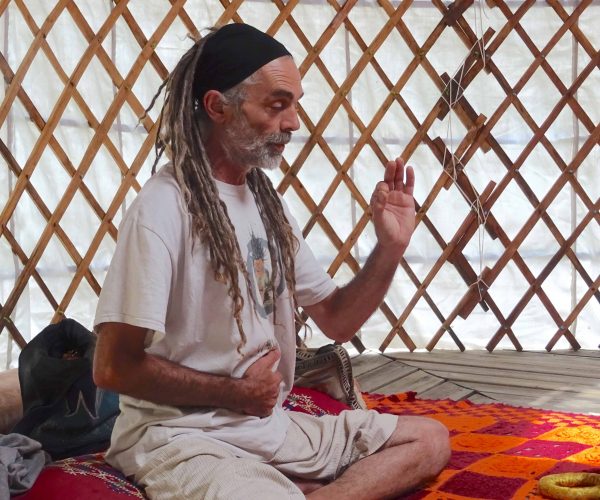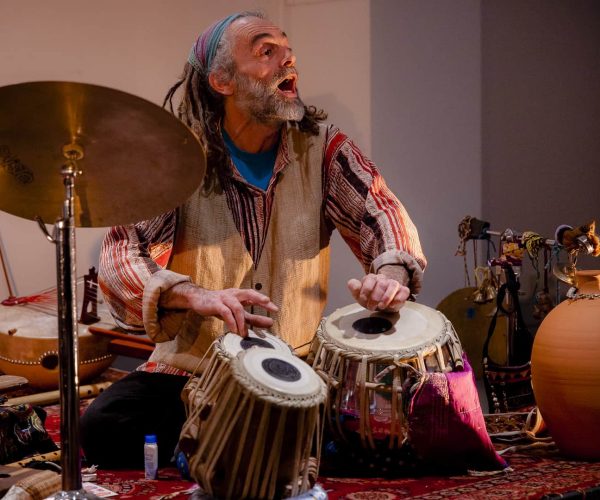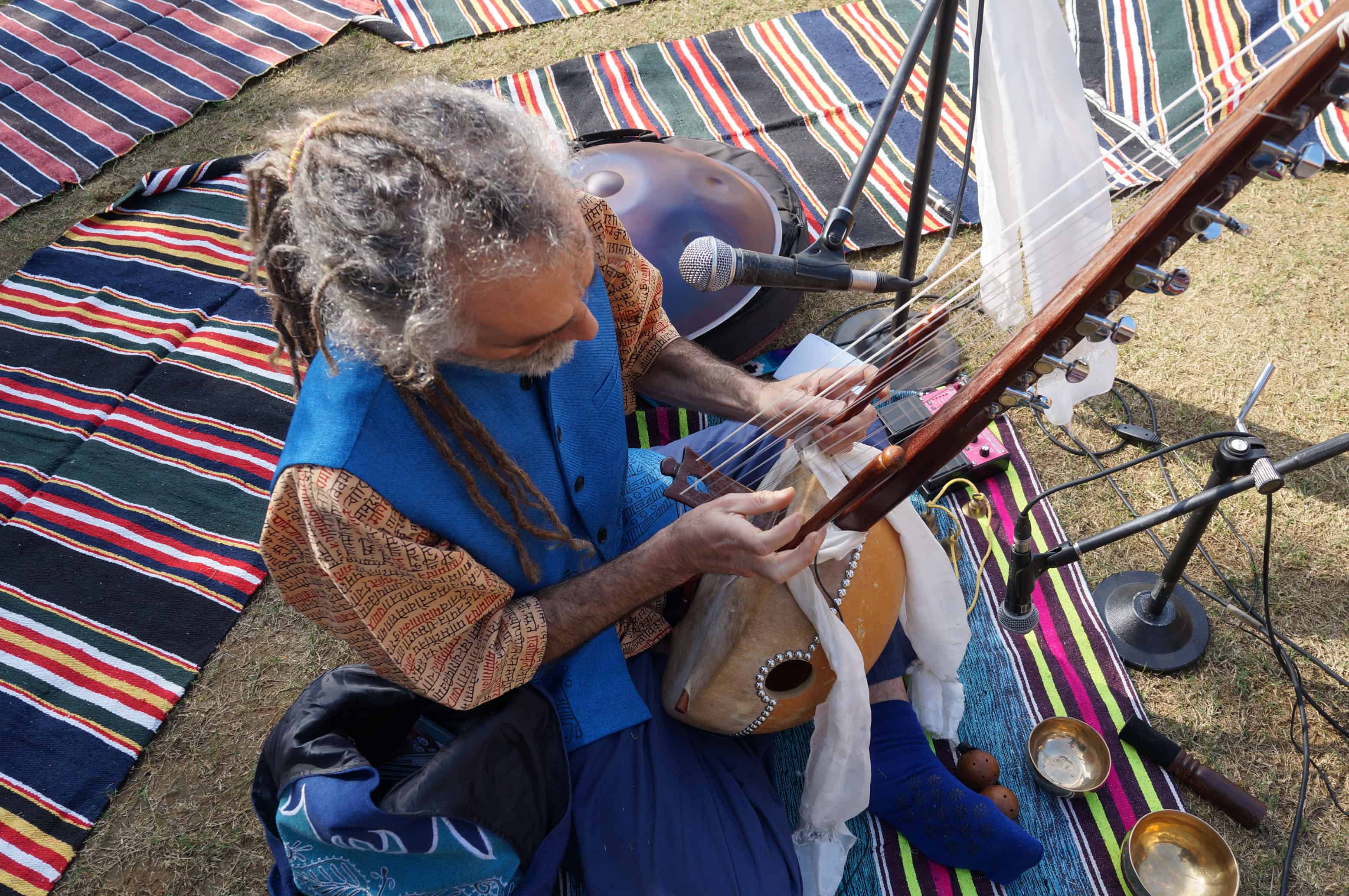Chants Diphoniques / Percus “World”
« Souffle ... Tempo ... Harmonie »
Deux approches du temps, l’une avec le souffle et le timbre de la voix l’autre avec les mains et des cycles au bout des doigts.
Les bergers nomades mongols ont depuis le temps de Gengis Khan cherché à imiter les sons produits par les animaux et la nature : les moutons, les chevaux, l’eau,
le vent… Ils ont ainsi, petit à petit, mis au point des techniques de chant particulières, parmi elles : le xöömij (chant diphonique sifflé) et le xarxiraa (litt. « petite rivière » ou le nom d’une grue noire, un chant diphonique profond) où la voix émet 2 sons bien distincts en même temps et devient un bourdon qui offre une panoplie de mélodies harmoniques. Depuis, ces chants appelés « chants diphoniques », se sont transmis au fil du temps.
Martin Dubois, qui a reçu la transmission de Tserendavaa et Johanni Curtet, Routes Nomades, vous propose de découvrir les techniques de base pour pénétrer cet univers et s’immerger dans cette pratique aux effets bénéfiques pour la voix, le corps et l’esprit : Massages harmoniques !
Quelques références : Journée « Permabondance », Haute-Savoie (mai 2019), Hand Pan Festival (2016, 2019), Harmonic Festival (2018), Harmonie des steppes (2016), Yoga Festival de Genève (2018), Peine Présence et Chant Diphonique, Corse (Avril 2019), École internationale de Genève (2018), « Center of Good Vibes », Delhi , « Harkat Studio », Mumbai (2019) …
Chant Diphonique :
Saviez-vous que tout le monde est capable de sortir deux sons avec une seule voix ? Un xöömijch (chanteur de chant diphonique Mongol) peut, à lui seul, chanter un bourdon vocal et réaliser simultanément une mélodie d’harmoniques. Cette acrobatie de la voix est virtuose, mais chanter deux sons, simplement superposés, est accessible à tous si on nous donne les clés.
N’importe qui peut être initié au chant diphonique ! Des exercices de musculation de la bouche, de la langue, de gestion du souffle, contrôler le son avec et sans diphonie, enrichir le timbre de la voix, des exercices pratiques pour aborder la modulation harmonique pouront (selon le niveau) nous mener à réaliser une mélodie en chant diphonique. Avec cette méthode, chacun peut pratiquer l’art xöömij sérieusement chez soi s’il le souhaite. Que le stagiaire soit novice ou déjà initié, en bénéficiant de ce stage, chacun repart avec des méthodes efficaces pour mieux gérer son souffle et enrichir le timbre de sa voix.
Rythme :
En fin de stage, nous tenterons de lier la pratique du chant diphonique à celle du rythme afin de créer ensemble une pièce improvisée naturellement pour l’occasion !



